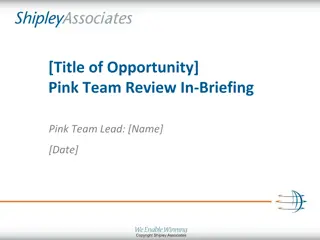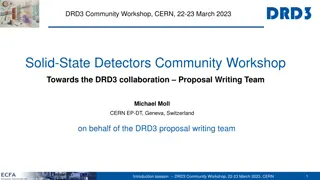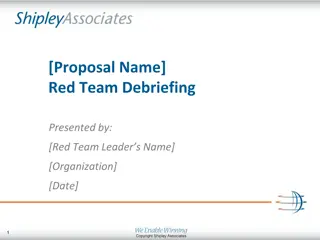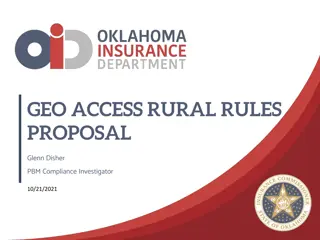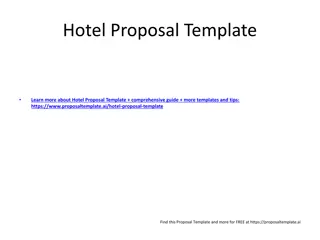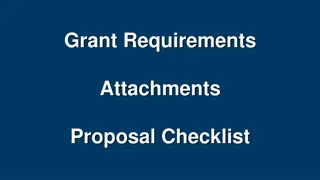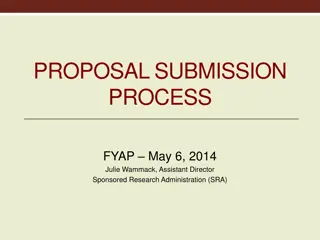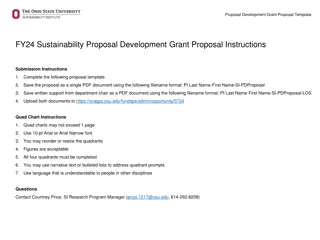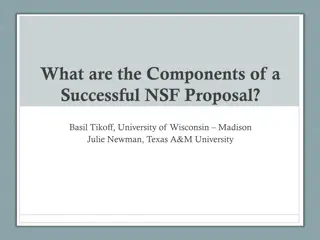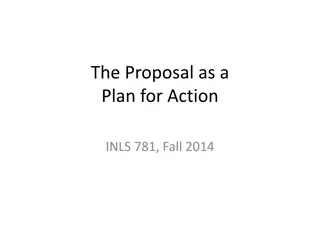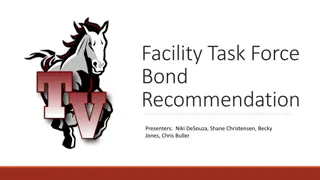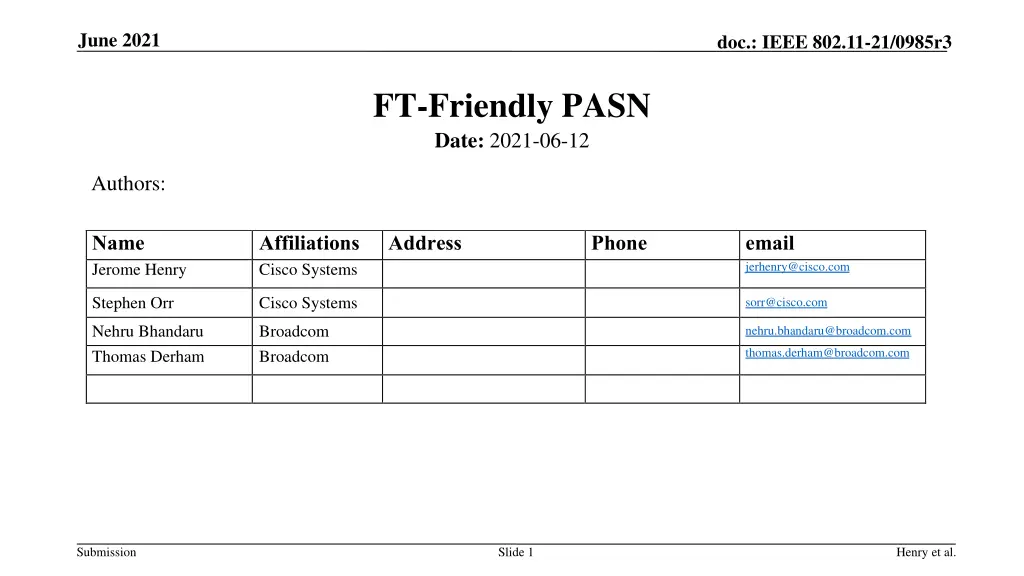
Efficient FT Scheme for Secure Exchange with Multiple APs
Discover how the proposed PASN-FT scheme allows for a secure and efficient exchange burst with multiple Access Points (APs) without the need for initial association. The model involves establishing a PASN session, expressing FT support, deriving FT Key Hierarchy, and using FT-style Over-the-DS for keying with subsequent APs. Explore the detailed solution description and initial AP discovery process outlined in the submission.
Download Presentation

Please find below an Image/Link to download the presentation.
The content on the website is provided AS IS for your information and personal use only. It may not be sold, licensed, or shared on other websites without obtaining consent from the author. If you encounter any issues during the download, it is possible that the publisher has removed the file from their server.
You are allowed to download the files provided on this website for personal or commercial use, subject to the condition that they are used lawfully. All files are the property of their respective owners.
The content on the website is provided AS IS for your information and personal use only. It may not be sold, licensed, or shared on other websites without obtaining consent from the author.
E N D
Presentation Transcript
June 2021 doc.: IEEE 802.11-21/0985r3 FT-Friendly PASN Date: 2021-06-12 Authors: Name Jerome Henry Affiliations Cisco Systems Address Phone email jerhenry@cisco.com Stephen Orr Cisco Systems sorr@cisco.com Nehru Bhandaru Thomas Derham Broadcom Broadcom nehru.bhandaru@broadcom.com thomas.derham@broadcom.com Submission Slide 1 Henry et al.
June 2021 doc.: IEEE 802.11-21/0985r3 Abstract PASN allows a pre-association encrypted exchange with an AP. There are multiple cases where such exchange has to be repeated with multiple APs in sequence. e.g., FTM, 802.11bc EBCS and ANQP exchanges, 802.11aq PAD queries, 802.11be NSEP priority access requests, 802.11 ANQP queries, 11k link measurements and more. PASN (Draft P802.11az D3.0 12.12.6) allows for an FT mode , but supposes that FT key hierarchy has already been established This submission proposes a PASN-FT scheme to allow for an efficient and protected exchange burst with multiple APs, without the need for initial association. Submission Slide 2 Henry et al.
June 2021 doc.: IEEE 802.11-21/0985r3 High Level Solution Description The model for PASN-FT is as follows: STA establishes a PASN session with a first AP PASN mode is PASN, FT support is expressed FT Key Hierarchy is derived STA uses FT-style Over-the-DS to establish keying with the next AP(s) STA can then jump to any other target AP and (almost) immediately proceed to encrypted exchanges Note that this method is RCM-compatible Submission Slide 3 Henry et al.
June 2021 doc.: IEEE 802.11-21/0985r3 Initial PASN-FT AP Discovery As expected, the AP advertises support for PASN and FT (+SAE) AKMs in beacons and probe responses RSNE includes PASN and FT AKMs and the MDE, with Domain ID and FT capability and Policy field (Over-the-DS FT) STA / supplicant AP/ Authenticator Beacon(RSNE(PASN, FT, AKM),{RSNXE],MDE) Submission Slide 4 Henry et al.
June 2021 doc.: IEEE 802.11-21/0985r3 Initial PASN-FT AP Connection RSNA Authentication Desired STA selects the following, based on AP beacons/probe responses: PASN as well as FT (+SAE) AKMs A Pairwise Cipher Suite for the future PTKSA A Finite cyclic group RSNA Authentication not sought STA selects the following, based on AP beacons/probe responses: A Pairwise Cipher Suite for the future PTKSA A Finite cyclic group (at least of security strength provided by advertised MPMK and Cipher suites) PASN parameters indicate that FT hierarchy is to be derived (No Base AKM for authentication) The initial AP connection is identical to PASN. FT Key hierarchy is derived Submission Slide 5 Henry et al.
June 2021 doc.: IEEE 802.11-21/0985r3 Initial PASN with FT AP Connection frame 1 Process uses PASN ISTA sends first PASN frame uses PASN structure Includes RSNE with Base AKM Parameters (list of PMKIDs [0 or more]), STA ephemeral public key, PASN Parameters, (optionally) Base AKM Data, (optionally) Time Interval Element, (optionally) RSNXE STA / supplicant AP/ Authenticator 802.11 Authentication(1, PASN, RSNE(Base AKM, PMKID[0 n]), [RSNXE], S-Ephemeral Pub, PASN Parameters, Base AKM Data-1 Submission Slide 7 Henry et al.
June 2021 doc.: IEEE 802.11-21/0985r3 Initial PASN with FT AP Connection AP side Process uses PASN AP validates the first frame, builds the second PASN frame RSNE contains pairwise cipher, MFPC and MFPR in RSN capabilities field set to 1, No pairwise bit set to 0, PMKID count of 1 and PMKID list corresponding to the PMKID from the PMKSA if applicable, Group Data Cipher Suite and Group Management Cipher suite are set to 00-0F-AC:7 (no group traffic allowed), Extended Key ID for individually addressed frames (bit 13) set to 0 PASN Parameters Element has the wrapped data format, chosen finite cyclic group ID, and the AP ephemeral public key Optionally Wrapped Data Element, A MIC Element computed as per 12.12.8.1 Submission Slide 8 Henry et al.
June 2021 doc.: IEEE 802.11-21/0985r3 Initial PASN with FT AP Connection frame 2 Process uses PASN AP validates the first frame, and responds with second PASN frame Includes RSNE with MPMK Parameters and pairwise cipher, AP ephemeral public key, PASN Parameters, (optionally) Base AKM Data, (optionally) Time Interval Element, (optionally) RSNXE STA / supplicant AP/ Authenticator 802.11 Authentication(2, PASN, RSNE(Base AKM, PMKID[0 n]), [RSNXE], A-Ephemeral Pub, PASN Parameters, Base AKM Data-2, MIC Submission Slide 9 Henry et al.
June 2021 doc.: IEEE 802.11-21/0985r3 Initial PASN-FT AP Connection frame 3 Process uses PASN STA validates the second frame, and responds with third PASN frame Status success, includes PASN Parameters Element, optionally Wrapped Data Element, MIC Element STA / supplicant AP/ Authenticator 802.11 Authentication(3, PASN, Base AKM Data-3, MIC) Submission Slide 10 Henry et al.
June 2021 doc.: IEEE 802.11-21/0985r3 OTA PASN-FT FT includes OTA and over the DS modes There is no need for an OTA mode with PASN-FT, as STA can establish the PASN connection with the target AP with the same count of frames as the FT-pre-establishment would consume There could be a mode for OTA PASN-FT to verify that the target AP is connected over the backend to the current AP, but this is also accomplished by Over-the-DS mode, and thus OTA mode has no clear additional benefit PASN-FT includes an Over-the-DS mode S1KH-ID is STA MAC address STA can decide of the MAC as it makes the request, i.e., the MAC does not need to be the same for all APs If the STA has associated to the first AP with an FT mode, the FT mode is used to carry the Over-the- DS action frame If the STA has not associated to the first AP, the current PASN key structure is used to carry over the DS exchange as shown in the following slides Submission Slide 11 Henry et al.
June 2021 doc.: IEEE 802.11-21/0985r3 Over-the DS PASN-FT - 1 STA sends first PASN-FT frame to target AP The frame type is action (not authentication as in slide 7), so the frame can be protected (robust) In addition to parameters from slide 7, includes MDE, FTE with S1KH-ID TBD define Base AKM Data to contain FT information MDE, FTE(S1KH-ID) etc. AP/ STA / supplicant Target AP Authenticator Protected Action [PASN FT(1, PASN, RSNE(Base AKM, PMKID[0 n]), [RSNXE], S-Ephemeral Pub, PASN Parameters, Base AKM Data-1, MDE, FTE (S1KH-ID)] Submission Slide 12 Henry et al.
June 2021 doc.: IEEE 802.11-21/0985r3 Over-the-DS PASN-FT - 2 Target AP responds to STA with second PASN-FT frame The frame type is action (not authentication as in slide 9), so the frame can be protected (robust) In addition to parameters from slide 9, includes the MDE, the Target AP MAC address, the target STA MAC and S1KH-ID, FTIE with timeout value AP/ STA / supplicant Target AP Authenticator Protected Action[PASN FT(1, PASN, RSNE(Base AKM, PMKID[0 n]), [RSNXE], S-Ephemeral Pub, PASN Parameters, Base AKM Data-1, MDE] Submission Slide 13 Henry et al.
June 2021 doc.: IEEE 802.11-21/0985r3 Over-the DS PASN-FT - 3 STA validates the second frame, and responds with third PASN-FT frame The frame type is action (not authentication as in slide 10), so the frame can be protected (robust) Status success, includes PASN Parameters Element, optionally FILS Wrapped Data Element, MIC Element, FTE with S1KH-ID and Target AP MAC AP/ STA / supplicant Target AP Authenticator Protected Action[PASN FT(3, PASN, FT, Base AKM Data-3, MIC, FTE)] Submission Slide 14 Henry et al.
June 2021 doc.: IEEE 802.11-21/0985r3 Open Issues Protected FTM frames are protected, including pre-association. What other frames are protected pre-association? Should the pre-association protection mechanism be extended to other frames (e.g., those listed on slide 2)? It seems logical to extend to protected dual of public action frames. OTA PASN FT would be simpler, but would expose the S1KH-ID. Should we envision a hybrid mode, e.g., where the S1KH-ID is sent over-the-DS, then the exchange is done OTA? Submission Slide 15 Henry et al.
June 2021 doc.: IEEE 802.11-21/0985r3 Straw Poll Do you support to study the design of a PASN FT-over-the-DS mechanism to protect pre-association exchanges over multiple APs? Note: the non RSNA-forming does not derive a key hierarchy Yes No PASN-who? Submission Slide 16 Henry et al.
June 2021 doc.: IEEE 802.11-21/0985r3 APPENDIX Submission Slide 17 Henry et al.


